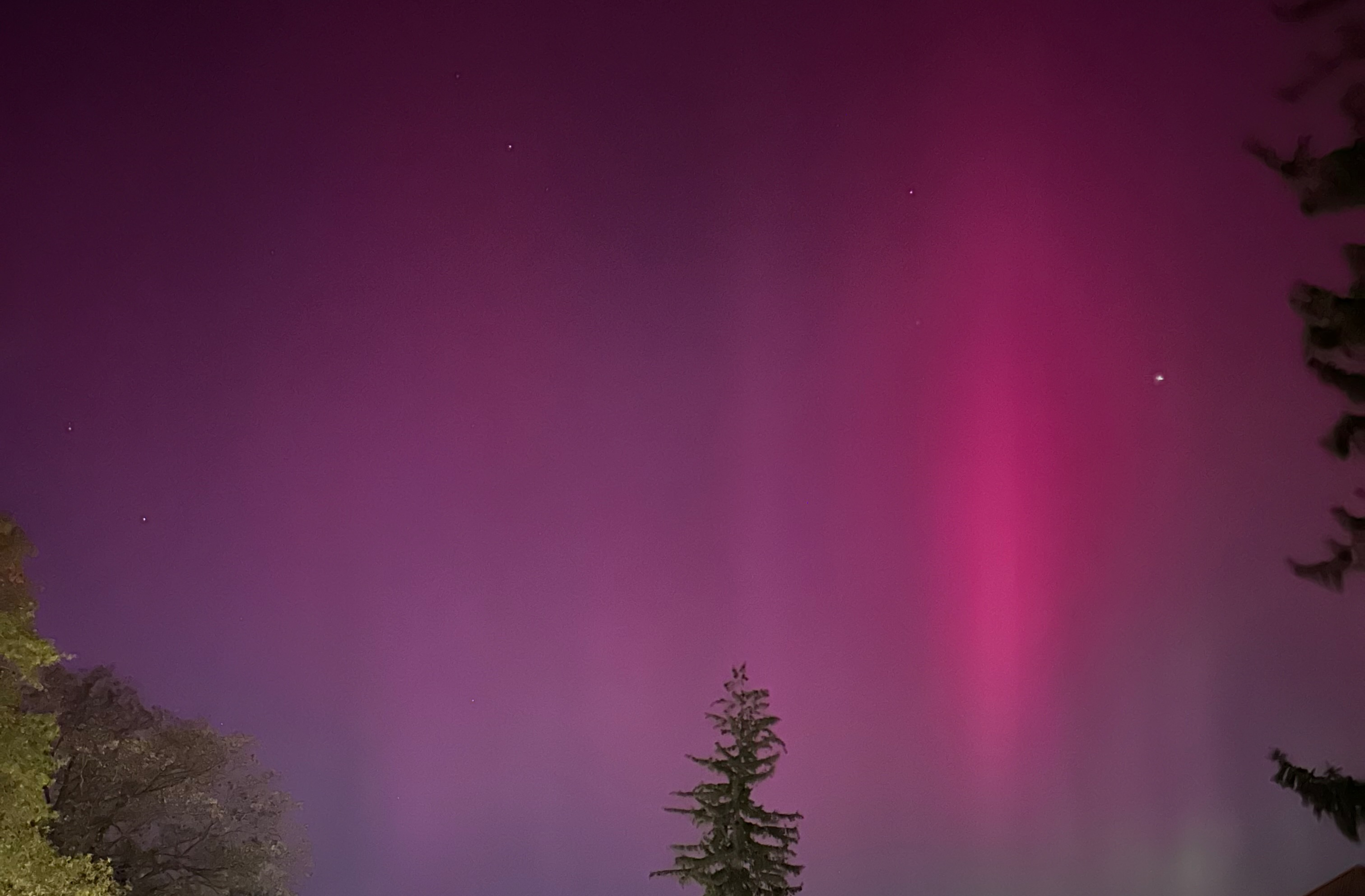The aurora borealis, famously known as the northern lights, recently graced the skies of the U.S., reaching as far south as Florida thanks to a significant geomagnetic storm.
Vivid images of this stunning phenomenon, which is usually confined to the far northern regions within 1,550 miles of the North Pole, flooded social media on Thursday night amidst the G4 solar storm.
Storm chaser and photographer Mike Theiss excitedly urged everyone to step outside, even in Florida, sharing that a remarkable northern lights event was unfolding. “Find someplace dark and look to your north,” he advised on X, formerly known as Twitter.
Jamie Arnold, a meteorologist with WMBF in South Carolina, noted that conditions were nearing G5 solar storm levels, potentially intensifying the light display later that evening. Reports indicated sightings of the lights as far south as Florida.

Meteorologist Shea Gibson showcased two breathtaking photos of the northern lights over Charleston, South Carolina, while Laura Hutchinson from Good Morning Connecticut shared her amazement at the “beautiful show” with three stunning images.
Social media accounts from the National Weather Service (NWS) also shared aurora sightings from locations such as New York, Pennsylvania, and Florida. The NWS Tallahassee account reminded followers that a camera might be essential for capturing the aurora, depending on where you are.
The National Oceanic and Atmospheric Administration (NOAA) had predicted that the northern lights could be visible as far south as Alabama and Northern California when they issued a “severe” G4 geomagnetic storm forecast.

The aurora borealis and its southern counterpart, the aurora australis, occur when electrons collide with the upper layers of Earth’s atmosphere. According to the Space Weather Prediction Center, accelerated electrons are funneled by Earth’s magnetic field towards the poles, where they interact with oxygen and nitrogen atoms, releasing energy in the form of light when they return to lower energy states.
The colors of the auroras depend on altitude: oxygen produces green light at lower altitudes and red light at higher altitudes, while nitrogen gives off purple-blue light. In southern regions, the lights often appear red because observers mainly see the high-altitude emissions.
Beyond their beauty, strong geomagnetic storms pose risks to power systems and communication networks—a matter of concern lately, especially for states recovering from Hurricanes Helene and Milton. Fortunately, as of now, there have been no significant disruptions reported due to the geomagnetic storm.
